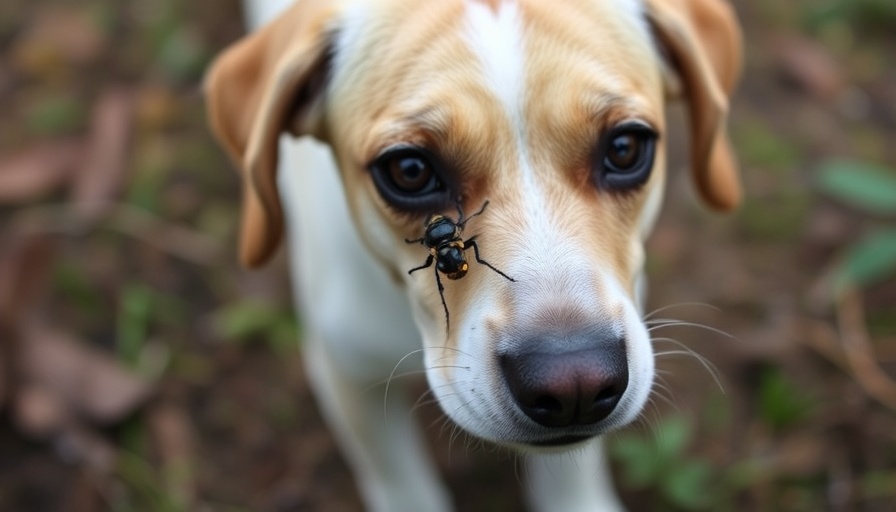
How Dogs Are Leading the Charge Against an Invasive Pest
The spotted lanternfly is not your average critter. First discovered in the U.S. just over a decade ago, this pest has become infamous for its rapid spread across the East Coast and into the Midwest. Its appetite for over 70 different species of plants, particularly fruit trees and hardwoods, poses a serious threat to agriculture and the environment. However, a new approach utilizing our furry friends is turning the tide in the fight against this invasive species.
The Role of Dogs in Eco-Conservation
In Garfield Heights, Ohio, a special team of dogs is springing into action against this sap-sucking menace. These canine companions, including Rio, an Australian shepherd-cattle dog mix, have been trained to sniff out spotted lanternfly egg masses hidden in various terrains, from tree bark to park benches. This innovative method is more than just a novel approach; it showcases how animals can assist in conservation efforts, merging training with environmental protection.
The Science Behind the Sniffing
The training process for these dogs is thorough. Led by a research initiative from Virginia Tech University, the program, fondly dubbed the Canine Citizen Science Study, calls on dog owners to bring their pets into the fold of ecological research. Only dogs that demonstrate superior scent detection skills are eligible. Once trained, they’re able to spot the egg masses before they hatch—a key feature in preventing the infestation of additional areas. Each egg mass can yield up to 50 new lanternflies, making their detection vital.
Success in Numbers: Saving Trees and Crops
The results have been overwhelmingly positive. With the assistance of trained dogs, researchers in Cleveland claimed to have discovered over 4,000 egg masses, potentially preventing the birth of 200,000 lanternflies! This impressive feat represents a significant step forward in the United States’ battle against the infestation. For farmers and homeowners alike, the impacts of these invasive pests can mean less fruit yield or damage to beautiful hardwood trees—which makes this canine contribution not only fascinating but essential.
Involving Communities in the Fight Against Invasives
The engagement of local communities is another benefit of this initiative. Owners whose dogs participate in the program gain a deeper connection to their environment and an understanding of local ecology. It provides a hands-on method to raise awareness about invasive species while fostering public investment in sustainable practices.
The Bigger Picture: How This Affects Homeowners in Dumfries
For prospective homebuyers and property investors, understanding the local ecosystem and its challenges is crucial. In areas like Dumfries, where agriculture and local plant life are integral to the community’s identity, initiatives that combat invasive species can ultimately safeguard property values and enhance the appeal of buying into a community-oriented neighborhood. With the rising value of nature and sustainability in property investments, being informed about invasive species’ impacts becomes not only relevant but necessary.
Moving Towards Sustainability: What You Can Do
The story of these trusty detection dogs is a reminder of our shared responsibility to protect local ecosystems. Homebuyers can consider properties that prioritize environmental consciousness and may actively contribute to harmful invasive species eradication. Moreover, engaging with local conservation efforts not only supports community vitality but positively shapes long-term sustainability practices.
The fight against the spotted lanternfly, buoyed by our four-legged allies, is a testament to innovative solutions in environmental management. By working together—humans and dogs alike—we can make strides toward preserving our beloved landscapes.
 Add Row
Add Row  Add
Add 





 Add Row
Add Row  Add
Add 








Write A Comment